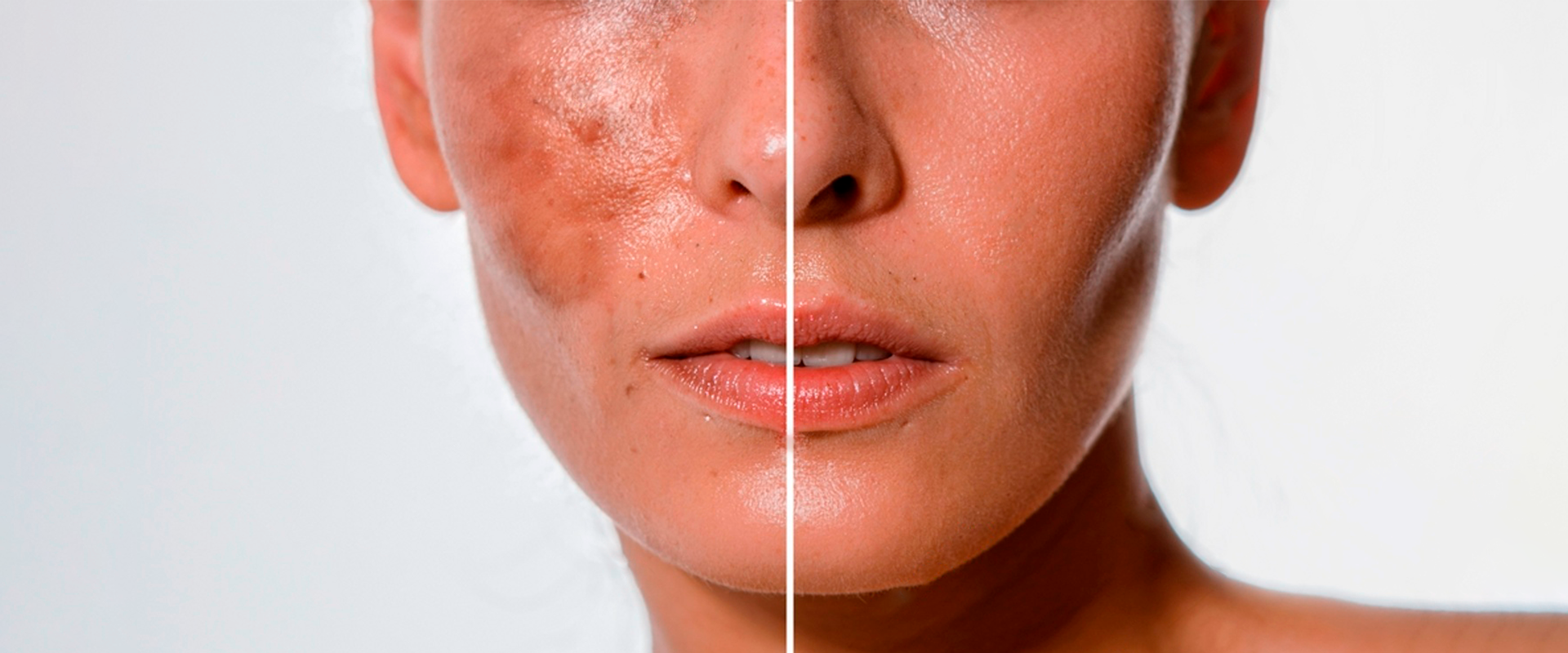Hoy nos adentramos en la hiperpigmentación, una preocupación común de la piel que afecta a muchas personas. Si estás lidiando con manchas oscuras persistentes, tenemos las respuestas que has estado buscando.
Índice de contenidos
- Protege tu piel, conserva su luminosidad
- Combate la hiperpigmentación desde su origen
- Procedimientos estéticos: el camino más rápido hacia una piel clara
- Transforma tu rutina de cuidado de la piel
Protege tu piel, conserva su luminosidad
Lo primero y más importante: proteger tu piel de los dañinos rayos solares es esencial. Ya sea que uses protector solar SPF 50+ o nuestro Protector Solar Hidratante 3D, resguardar tu piel de la exposición UV es un paso fundamental en tu rutina de cuidado de la piel.
Combate la hiperpigmentación desde su origen
Si la hiperpigmentación se ha convertido en una preocupación, puedes contar con md:ceuticals para ayudarte. Nos especializamos en soluciones avanzadas para el cuidado de la piel que se enfocan en la síntesis de melanina y promueven la regeneración celular. Nuestro enfoque innovador combina altas concentraciones de ingredientes activos blanqueadores, exfoliantes, antioxidantes e iluminadores para abordar la hiperpigmentación en diferentes etapas de la melanogénesis.
Procedimientos estéticos: el camino más rápido hacia una piel clara
Para hiperpigmentaciones severas, los procedimientos estéticos ofrecen una solución rápida y efectiva. Tratar condiciones como el melasma requiere cuidado y experiencia especializados. En md:ceuticals, lideramos el uso del ácido tranexámico, un ingrediente innovador que bloquea la formación de melanina y apoya la integridad de la piel. Nuestros productos trabajan para prevenir la producción y transferencia de melanina, ofreciendo resultados incomparables en el manejo de la hiperpigmentación.
Transforma tu rutina de cuidado de la piel
¿Listo para decir adiós a la hiperpigmentación y darle la bienvenida a una piel radiante? Explora nuestra gama de productos diseñados para combatir la síntesis de melanina, promover la regeneración de la piel y restaurar la luminosidad natural de tu piel. Cada ingrediente en nuestras formulaciones tiene como objetivo procesos enzimáticos específicos, bloqueando eficazmente la síntesis de melanina y previniendo la hiperpigmentación.En md:ceuticals, estamos comprometidos en transformar tu viaje de cuidado de la piel. Mantente atento para más consejos expertos e información sobre cómo lograr una piel saludable y radiante. Recuerda, un excelente cuidado de la piel comienza con entender las necesidades únicas de tu piel. Descubre los secretos para una piel radiante con md:ceuticals, la ciencia de la excelencia en el cuidado de la piel.







